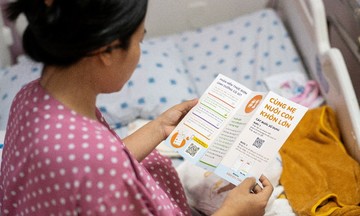The kidneys are responsible for filtering waste, balancing fluids, and regulating blood pressure. Impaired kidney function can also affect other parts of the body. Unexplained aches and pains may signal kidney damage. Early recognition of warning signs is crucial for timely diagnosis and treatment of kidney disease, preventing related complications.
Lower back and flank pain: One of the most common and recognizable signs of kidney damage is lower back pain, especially in the flank area, between the lower ribs and hips. Patients may experience a dull ache or throbbing pain on one or both sides of the back, sometimes with sharp, intermittent pain often seen in people with kidney stones. The pain usually doesn't subside with rest or changes in posture.
If the kidneys are inflamed, infected, or obstructed (such as by kidney stones or fluid buildup), it can lead to pain that radiates to the back. This discomfort is often mistaken for muscular back pain, but kidney-related pain typically persists even with massage, warm or cold compresses, or stretching.
Abdominal pain: The kidneys are located near the back of the abdominal cavity, and conditions like infections or blockages can cause pain to radiate forward. Kidney infections (pyelonephritis), kidney stones, or urinary retention can put pressure on the kidneys and ureters, causing pain that spreads to the abdomen. This pain can feel like cramping or discomfort in the lower abdomen, pressure or bloating, sudden sharp pains, and is often accompanied by nausea (especially with kidney stones).
Groin and pelvic pain: Pain from the kidneys can also radiate to the groin or pelvic area. This is especially common in individuals with kidney stones or severe infections. They may experience a dull, persistent ache in the pelvic region, discomfort during urination, or a sudden urge to urinate. In some cases, the pain can be severe and sudden, accompanied by nausea, fever, or changes in urine color, signaling a potentially serious underlying condition. The ureters, which connect the kidneys to the bladder, pass through the lower abdomen into the pelvic area. As a stone moves through the ureter, it can irritate surrounding nerves and tissues, leading to groin pain that spreads to nearby areas.
Ankle and foot pain: While the kidneys are located in the upper abdomen, foot pain or discomfort in the lower extremities can also signal underlying kidney problems, particularly fluid retention or nerve dysfunction related to advanced kidney disease. Unhealthy kidneys struggle to remove excess fluid and waste from the body, potentially leading to swelling (edema) in the legs and feet. Uremic neuropathy (a nerve condition caused by waste buildup in the blood) can also lead to pain or numbness in the lower limbs. In this case, individuals may experience aching or cramping pain in their calves and thighs, along with swelling and stiffness in the ankles and feet.
Chest and rib pain: Kidney damage can potentially cause chest or rib pain, often stemming from related complications like fluid buildup, electrolyte imbalances, or inflammation of the heart lining due to kidney failure. As kidney disease progresses, fluid can accumulate around the lungs or heart, causing pain or shortness of breath. Electrolyte disturbances can also cause muscle cramps or spasms in the chest wall or rib area. The discomfort may worsen with breathing or lying down.
Bao Bao (Times of India)












